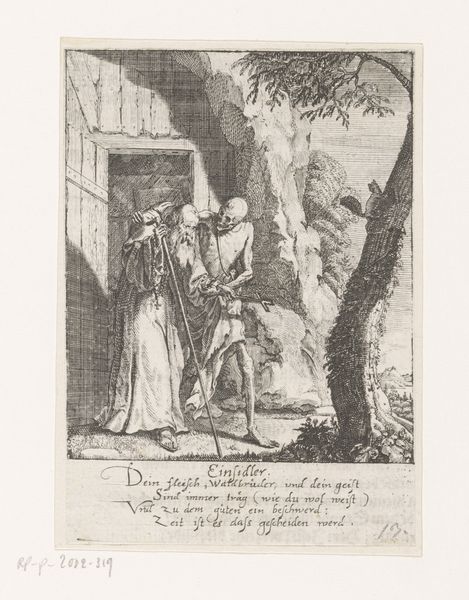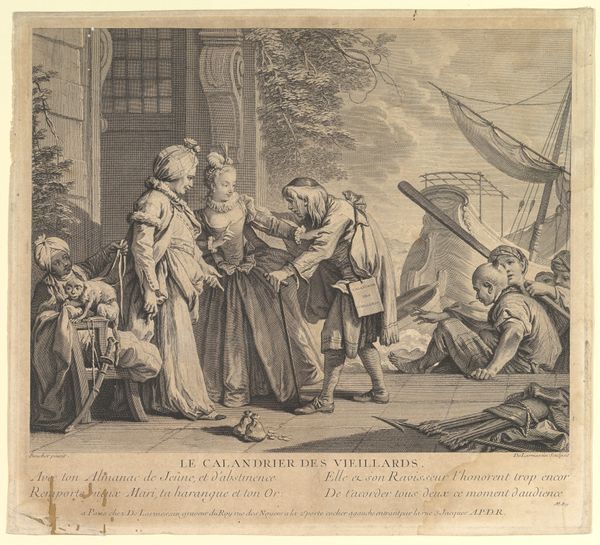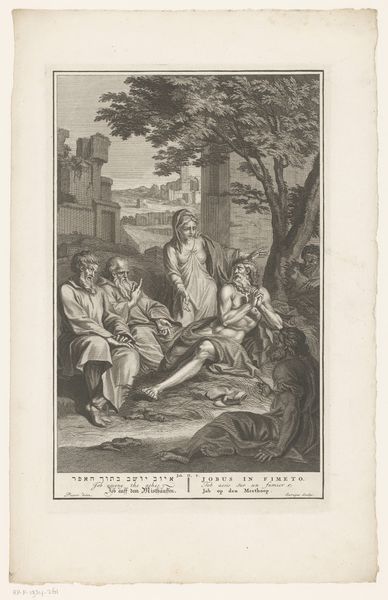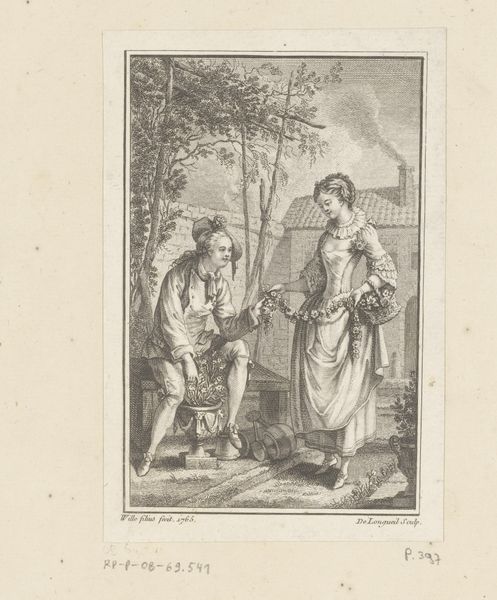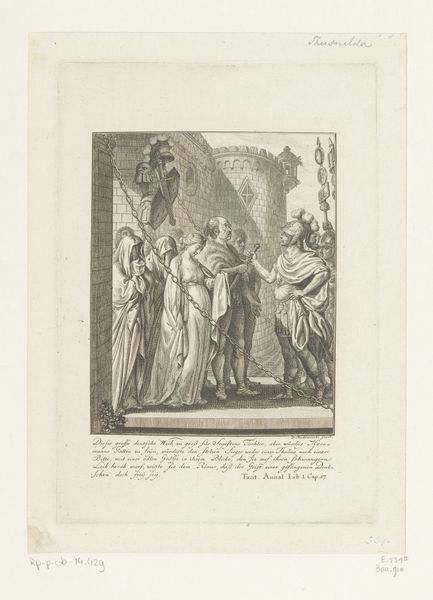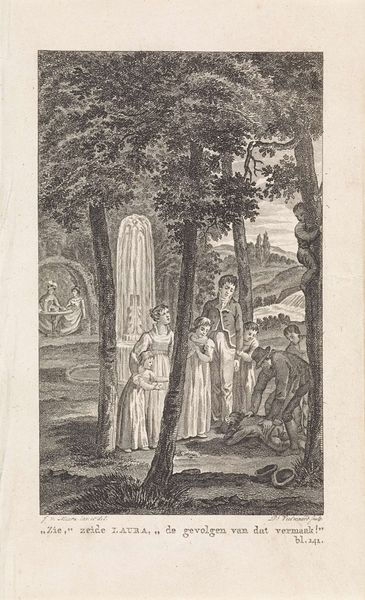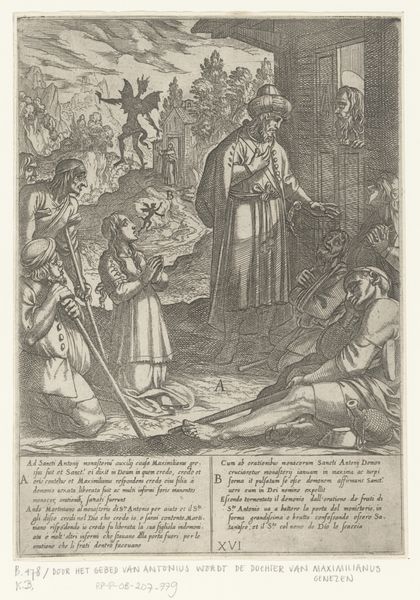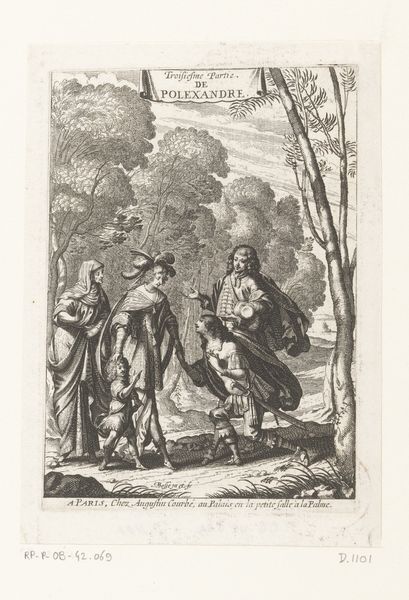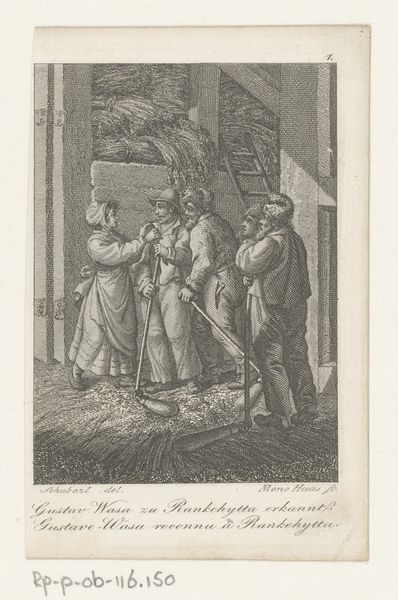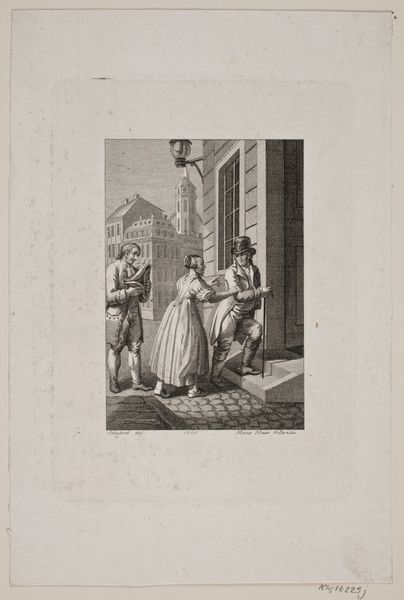
print, paper, engraving
#
narrative-art
#
baroque
# print
#
paper
#
history-painting
#
engraving
Dimensions: height 350 mm, width 220 mm
Copyright: Rijks Museum: Open Domain
Curator: This engraving, "Abraham Casting Out Hagar and Ishmael," was created in 1711 by Louis Surugue, based on a design by Coypel. It's housed here at the Rijksmuseum. Editor: My first thought is how unsettling the scene feels, even with such precise lines and a classical composition. The grim expressions, the contrast between light and shadow... there’s a tension that pulls you in. Curator: It certainly depicts a harsh moment, doesn’t it? Surugue, with his mastery of the burin, captures the drama inherent in this Old Testament narrative. Hagar and her son Ishmael are being expelled, a heartbreaking consequence of familial conflict. Editor: Heartbreaking indeed! The act of expulsion here has far-reaching resonance—patriarchal power dynamics at play, the dispossession of a woman and her child. How does Surugue visualize these injustices within the baroque framework? The figures of Sarah in the background as accomplices amplify the brutality... Curator: The choice of the print medium also speaks volumes. Engravings like this were widely circulated. Making it easier to spread moral tales or Biblical lessons across society. The clear, reproducible image lent itself well to didactic purposes. The details in their robes—that expressive musculature—convey weighty emotions, no pun intended. Editor: I think we are supposed to engage with Abraham as this moral exemplar, but it's difficult in our present. Seeing it, one must ask: Who gets to write history, and whose stories are left out? Curator: It leaves me unsettled to think that viewers at the time might have seen Abraham's actions as wholly justified. Still, from an aesthetic point, you can appreciate how masterfully the light catches Hagar's face, highlighting the mix of fear and determination. Editor: That interplay of light and shadow serves to heighten the pathos of her situation. Knowing the historical and political weight that informs its visual construction makes it, as you say, unsettling. It reveals that behind the masterful Baroque elegance there remains this uncomfortable truth. Curator: Ultimately, the engraving pushes us to examine not only the historical context, but also the values that underpin these narratives. Editor: Agreed. This work asks critical questions about authority, family, and social hierarchies and how deeply interwoven they remain in our globalized, hyper-mediated present.
Comments
No comments
Be the first to comment and join the conversation on the ultimate creative platform.
